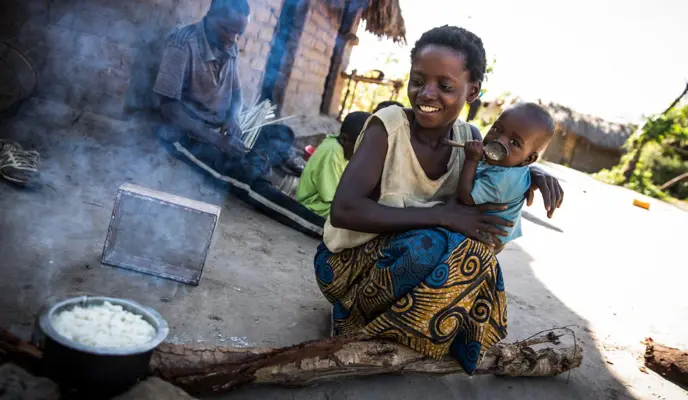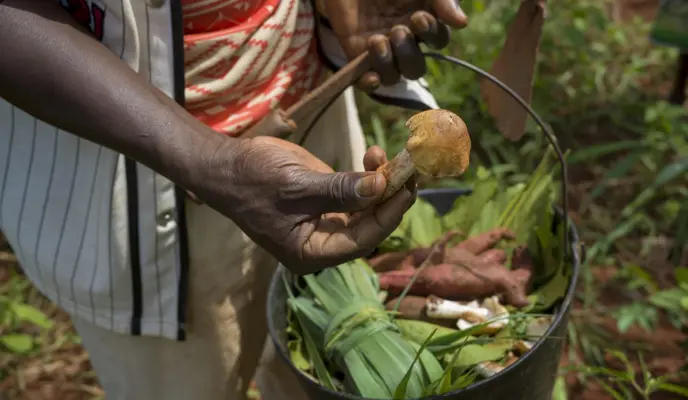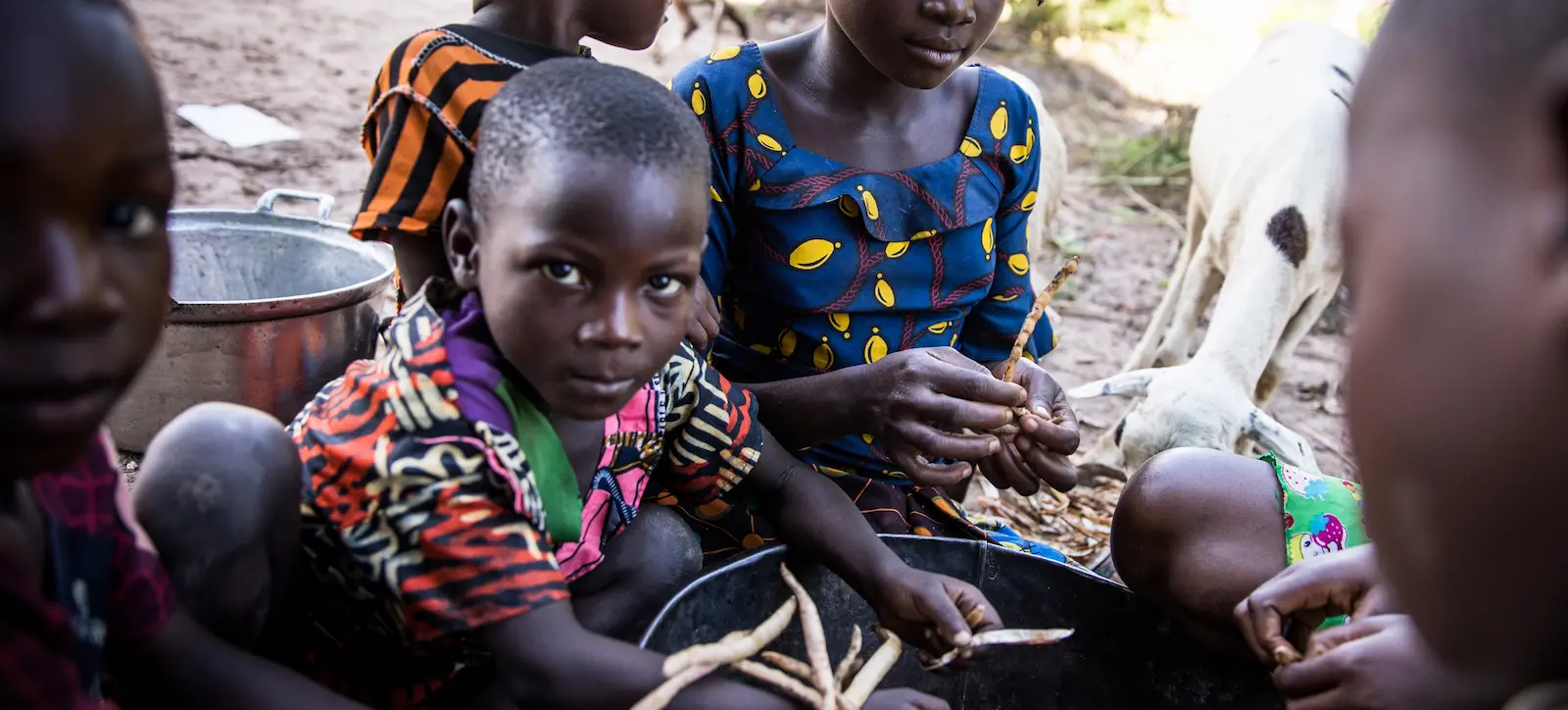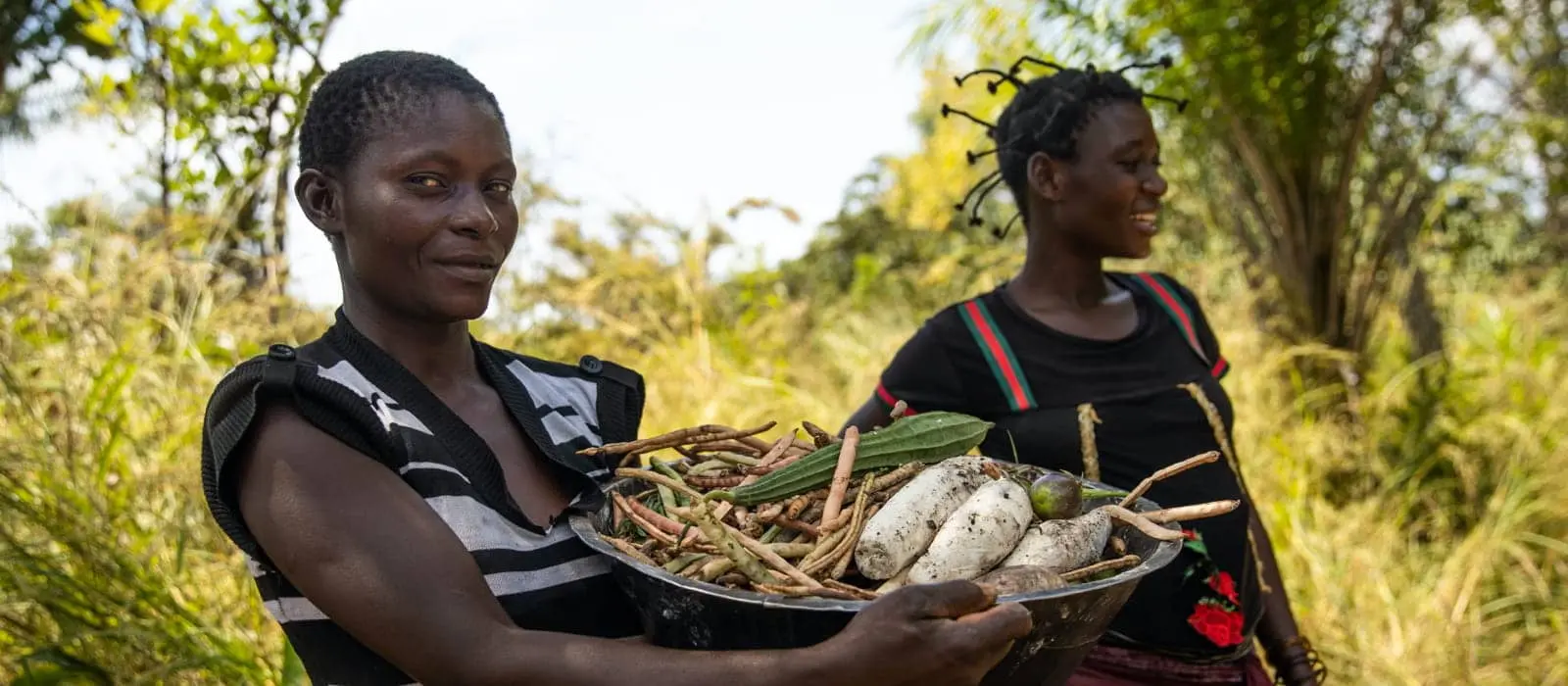Conflict and hunger exist in a back-and-forth relationship where one tends to increase the other. Unfortunately, in 2021, both are on the rise. This piece is adapted in part from Caroline Delgado and Dan Smith’s essay, “Hunger and Food Systems in Conflict Settings,” published by Concern Worldwide and Welthungerhilfe as part of the 2021 Global Hunger Index.
One of the key causes of hunger is conflict — and, in many cases, vice versa. Unfortunately, both are on the rise. In 2020, more people were subject to food crisis due to conflict than any other factor. 2020 also saw 169 violent conflicts around the world. Military spending that year was at its highest since the Cold War.
This connection isn’t new: Angola and Rwanda both experienced large-scale civil wars in the 1990s and 2000s. With a decrease in violence, a significant fall in hunger levels followed. Conversely, Chad and the Central African Republic are both experiencing some of the highest levels of hunger in the world. They’re also caught in ongoing conflict and political unrest.
Without achieving food security, sustainable peace is an impossibility. Likewise, without peace, the likelihood of ending global hunger is equally unlikely. Here are five key ways in which conflict and hunger work together — to deadly consequences.
Conflict and hunger: Fast facts
- Hunger is a weapon of war, whether used explicitly or not, and leaves civilians paying the highest price.
- Violent conflict remains the main driver of hunger, exacerbated by climate change and COVID-19.
- Food systems in conflict-affected countries are more vulnerable to setbacks and have fewer safety nets.
- There’s a two-way street between conflict and hunger, and it’s almost impossible to end one without also ending the other.
- In 2021, violence escalates faster and in more hyper-specific locations. But its effects can stretch on for miles and take years — if not decades — to undo.
1. Conflict destroys agriculture
One of the most direct effects that conflict has on hunger is also the most tangible. In conflict-affected countries, approximately 60% of people live in rural areas. Agriculture is their source of both food and income. This means that entire communities are vulnerable to the effects of conflict. In the Central African Republic, 80% of the population relies on subsistence agriculture and livestock for their livelihoods. This is a devastating number when you consider that the country is more than a decade into a civil war with no sign of peace. Fighting has destroyed villages, land for crops and livestock, irrigation infrastructure and crops. Fighting often closes roads and points of access, which prevents others from getting to their fields. If they make it to their farm, it may be too late: Militant groups often take crops to feed themselves.
Even if the land and crops are safe and families don't flee their home, running a farm is a labor-intensive job. Civilian injuries during conflict are common, and can often leave people unable to work the land — sometimes for the rest of their lives.

2. Conflict interrupts food supply chains and economies
Suppose a family is able to safely remain at home during a conflict. They're able to till the land and reap a decent harvest. What then? If they're unable to go to market due to conflict-related closures, that can also disrupt a delicate food system. In rural communities, neighbors often rely on one another for their income as well as for a diverse diet. Close the market, and the system is likewise shut down. Without formal storage facilities, this also means that much of the food harvested will go to waste, rotting before it can be eaten.
Conflict makes day-to-day life unpredictable, which can also lead to economic instability. Even relatively wealthy families, like those living in Burundi during the country's civil war, may hedge their bets in response. In Burundi, farmers of all economic situations switched to low-risk, low-return crops. Likewise, farmers in Colombia during the country's five-decade civil war switched from profitable crops like coffee and fruit trees to options that are more seasonal and subsistence-based. The goal was to survive rather than thrive. Such crops allowed for quicker harvests and immediate results, but they also hurt incomes and diets for generations.
The economic impacts of a conflict also mean inflation. Food not only becomes scarcer, but also more expensive. In these conditions, black markets thrive, but they offer a double-edged sword: On the one hand, they are sometimes the only way people can eat. On the other hand, they also open people up to more risk and greater shocks if the prices become unmanageable or supplies run dry.

3. Conflict leads to displacement which leads to food insecurity
People displaced (internally or as refugees) are more vulnerable to hunger and undernutrition. In one study from Nigeria's Yobe state, children living in displacement were 57% more likely to have acute malnutrition than children in host communities.
In host communities, refugees often face challenges based on their legal status and language barriers. Without work or formal resources, their living situations are often compromised. After more than a decade of conflict in Syria, many middle-class families gave up everything to escape. Now living in displacement and below the poverty line, many struggle to feed their families. Some fare better with food aid and nutrition support provided by NGOs. However, with humanitarian financial commitments lagging, this isn't a long-term solution.

4. Conflict disproportionately affects child hunger and nutrition
It's not just about the immediate lack of food. A poor diet (both quality and quantity) leaves children especially vulnerable. Their bodies and minds are still growing, and that growth requires energy in the form of food. Without food, they may be stunted physically and/or intellectually. They also become more susceptible to other illnesses and are more likely to die of hunger than adults.
This is a link between conflict and hunger that's well-documented. In Somalia, data from 2007-10 showed that conflict increased both child stunting and wasting rates. A 2013 study from Nigeria showed that states affected most by conflict had child wasting rates of 23%; in non-conflict areas, the rates were as low as 10%. Reports from 2019 showed similar rates in Afghanistan and Yemen.
While conflicts have grown more localized, these effects of violence can be felt by children living as far as 60 miles away. They can also impact children born as late as eight years after the conflict ends.
The effects of a local conflict can be felt by children living 60 miles away and born as late as eight years after the conflict ends.
5. Conflict can increase in areas affected by food insecurity
Conflict and hunger exist in a vicious cycle. Conflict not only drives up hunger levels: Rising hunger levels also lead to grievances that can escalate to violence. As violence escalated in Haiti through 2019, UN reports that year predicted a nearly 10% increase in hunger levels for 2020. This was before COVID-19, and by the beginning of 2021, the increase in Haitians without adequate food was closer to 20%.
Part of the current crisis in Haiti has been fueled by this food shortage and inflation. Year-over-year, food prices rise, unregulated, by 30%. A recent World Food Programme report estimated that a working person in Haiti paid 35% of their daily income on one meal. That's akin to someone in New York paying $74 for lunch.
The causes of conflict and hunger in each country — even community — are unique. Because of this, recovery takes time. The World Bank estimates between 15 and 30 years. This is an equally fragile period of peacetime, where ongoing food shortages or other issues can reignite old disputes. Signing a peace treaty is only the first step in a long road to recovery. It's also why we must continue to work towards establishing a peace strengthened by food systems, and food systems strengthened by peace.
Download the 2021 Global Hunger Index
Since 2006, Concern has partnered with the International Food and Policy Research Institute and Welthungerhilfe to assess the progress and setbacks in ending hunger. The Global Hunger Index, an award-winning, peer-reviewed report, offers a way to compare levels of hunger between countries and regions, allowing us — and other organizations and policy-makers around the world — to focus on areas where the need is greatest.


